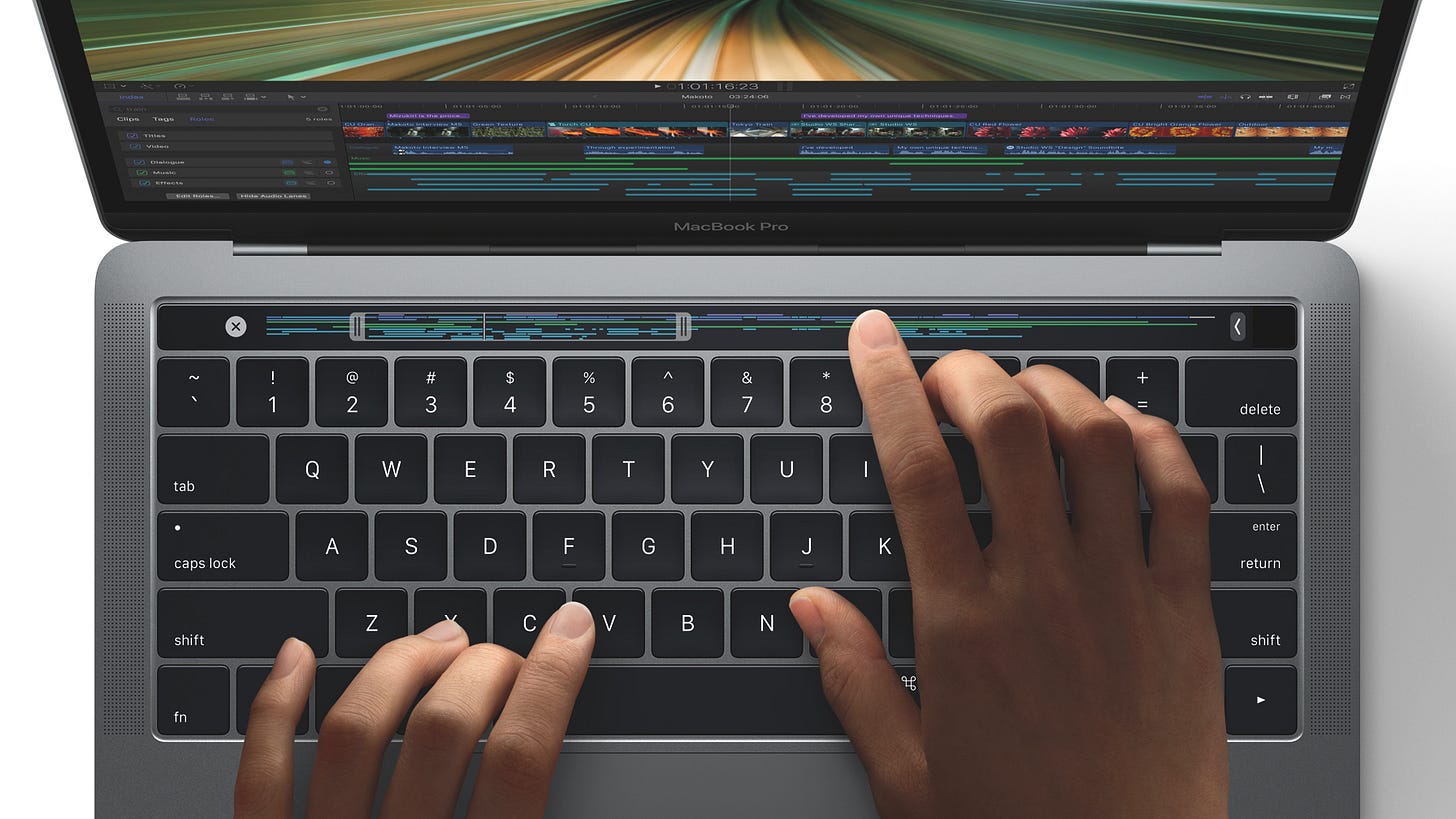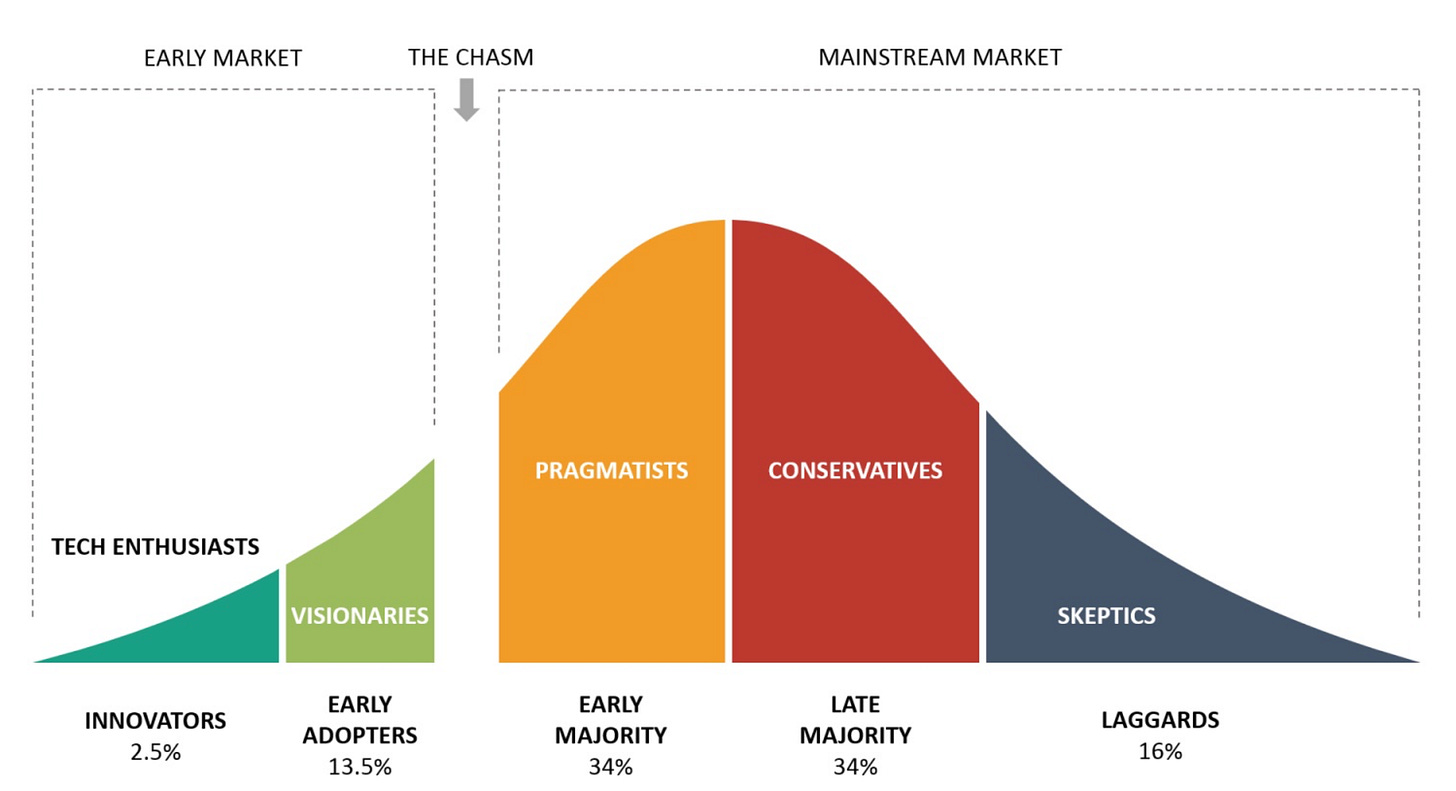MacBook's Touch Bar Experiment
In 2022, I bought one of the last MacBooks with the Touch Bar, and I still think it was a brilliant but misunderstood feature.
I think the Touch Bar was Apple's ambitious attempt to reinvent a stagnant part of the keyboard. Instead of a fixed row of function keys, they rolled out a dynamic strip of glass that adapted to whatever you were doing. The idea was to give you relevant controls, right at your fingertips, for any given app.
In a way, this move was classic Steve Jobs-era thinking. It was a bet on essentialism, stripping away the static and replacing it with something fluid and contextual. What this really means is they traded a one-size-fits-all solution for a tool that could, in theory, be perfect for any specific task.
This obsessive focus on the user experience has always been an Apple hallmark. It’s in the details, from the precise etching of the logo to the meticulously organized circuit boards of the original Macintosh. That kind of attention to detail, even on things most people will never see, is what builds a deeper connection with a product.
Innovation Ahead of Its Time?
Let’s look at why the Touch Bar’s reception was so divided. While some people loved the idea, many others found it awkward or just plain unnecessary. This is a classic example of the gap between a cool innovation and what people actually find useful day-to-day.
A big part of the problem was the steep learning curve and the lack of deep customization. For a lot of users, the familiar, predictable function keys were simply more efficient than the Touch Bar's new-but-shallow advantages. It was a solution in search of a problem.

This is where you see the "crossing the chasm" concept in action.
The Touch Bar absolutely intrigued the tech enthusiasts, early adopters, and the people who are always excited about the new gadget. But it stumbled trying to win over the mainstream. That group, the early majority, are pragmatists. They need a compelling, practical reason to change their habits, and the Touch Bar didn't offer one. It felt more like a gimmick than a genuine improvement.
From there, the resistance only grew. The late majority and the skeptics, who are naturally wary of change, had no interest in giving up their reliable function keys for something so different (and even confusing).
Ultimately, despite the clever design, the Touch Bar just didn't prove its worth to enough people, which is why Apple quietly phased it out.
Market Misunderstanding or Missed Opportunity?
So, why didn't the Touch Bar stick?
First, you're fighting against decades of muscle memory. Most of us are wired to use physical keys. The Touch Bar demanded we unlearn that, trading the certainty of a physical keystroke for a glance at a digital strip. That’s a big ask, and it required a shift in how people fundamentally interact with their laptops.
Then there are user expectations. People want technology that is both simple and personal. The Touch Bar tried to do both but ended up in a weird middle ground. It offered some customization but sacrificed the straightforward simplicity of the function row. A successful feature needs to feel intuitive, not like a trade-off.
Apple's storytelling also played a role. For a new feature to catch on, you need to clearly and compellingly show people why they need it. The narrative for the Touch Bar never really landed. Apple never sold a story that made its benefits feel essential, so for most people, it remained a curiosity rather than a must-have tool.
And maybe, the timing was just off. The market might not have been ready for such a futuristic concept. In technology, being too far ahead of the curve can be just as problematic as being behind.
This may seem like a story of a feature that failed, but it's actually lesson in the sophisticated relationship between people and their tools. The Touch Bar challenged the line between touching and typing, and its quiet disappearance tells us that an innovation has to be seamlessly useful now.
When you think about it, the Touch Bar was a precursor to the truly adaptive interfaces that AI and LLMs now make possible. The original idea of an interface that understands your context and adapts was pretty sound. It was just waiting for the technology to become smart enough to make it feel effortless. Maybe the journey of the Touch Bar was a step toward that more fluid, adaptable future.




IMHO the biggest problem with the touch bar—the thing that truly doomed it—was the fact that it was paired with Apple's least-reliable keyboard of all time. When replacing my 2010 MacBook Pro in 2018 I opted for a used 2016 model that I knew would last me for years, rather than a 2018 model that was (based on my experience with the ones supplied by my employer) going to need a new keyboard every 12 months or so, and become instantly worthless once the warranty ended.
It's too bad they opted to discontinue the touch bar along with the butterfly keyboard.